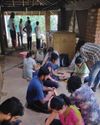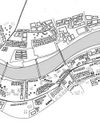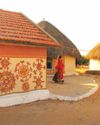Architecture in India – an emerging nation still in a state of architectural flux – presents a world of exciting opportunities, as well as overwhelming challenges. Do we look to the future and modernize, or draw from the rich traditions of the past? Do we concentrate on affordability, or invest in high-end, futuristic building technologies? And where does that leave sustainability?
Working in this dramatically dynamic context, Manit and Sonali Rastogi have taken to nature’s design-book for inspiration – for a design philosophy that shapes their firm Morphogenesis. In this interview, Manit Rastogi talks about everything architecture – right from the need to develop a ‘Brand India’ design identity, to how architecture is more of a state of being than merely a profession.

IA&B: Can you take us through your journey as an architect? How did the Architecture Association (AA) help in shaping your design outlook?
MR: Sonali and I got our undergraduate degrees from School of Planning and Architecture, New Delhi. It has a pedagogy of very competent, technically oriented, contextually situated architecture and this in the late 80s made for very interesting education. However it did not benefit from a global exposure because that wasn’t the way India was at that time. One of the reasons for going to the Architecture Association (AA), London for our Masters was this pressing need to understand what the architectural conversation was like around the globe, what were people thinking, what were the debates, what were the influences; and I think that was the biggest learning for us, at the AA. There were people from different nationalities carrying latent within them, knowledge from their own countries, however, part of a larger global discourse. In that way, our time there helped us develop our vision of taking Indian architecture global.
IA&B: How much has Morphogenesis evolved since its inception? Is there an ideal, final form that you want Morphogenesis to take?
Bu hikaye Indian Architect & Builder dergisinin August 2017 sayısından alınmıştır.
Start your 7-day Magzter GOLD free trial to access thousands of curated premium stories, and 9,000+ magazines and newspapers.
Already a subscriber ? Giriş Yap
Bu hikaye Indian Architect & Builder dergisinin August 2017 sayısından alınmıştır.
Start your 7-day Magzter GOLD free trial to access thousands of curated premium stories, and 9,000+ magazines and newspapers.
Already a subscriber? Giriş Yap

Interlacing Perspectives
‘Meraki-2019’ A visionary Seminar series presented by Dr.Baliram Hiray College of Architecture, Bandra(East), Mumbai.

Facilitating A Community Through Architectural Practice
The humble, self-designed, self-built and organically planned home built by the majority of the world population rarely gets appreciated and critiqued as a viable lesson in architectural design.

The Art Of Solving Problems Creatively
The practice of architecture is perhaps incomplete without the complement of a variety of other arts.

Upcycling towards a playful tomorrow
Play is like the middle child, often forgotten, and always taking a back seat. For young kids, play can simply be running around, armwrestling with friends, building sandcastles on the beach, or singing popular music tracks in the shower.

Balancing The Poetics And Pragmatism Of Everyday Design
Humanity is faced with an oxymoronic crisis. The crisis involves the earth, the environment, impending looms of climate change, deforestation, loss of species, dwindling resources etc.

Just Give Me Some Space: Discussions And Beyond
Just Give Me Some Space (JGMSS) is Suha Riyaz Khopatkar’s debut book that paints a portrait of the dynamic life of an architecture student.

The Next In Vernacular Architecture
Architecture has become a capitalist.

Rethinking The Future: Architecture And Its Education
“I want to be like animals, the bird makes a nest in one or two days, the rat digs a hole in a night, but intelligent humans like us spend 30 years to have a house, that’s wrong.” - Jon Jandai

Uniting The Human-Scale With The City-Scale
London-based architect Usman Haque is famed for his interactive architectural systems, and for his exploration of newer, more effective ways of creating human engagement and interaction through his designs. Indian Architect & Builder caught up with him, to quiz him on a variety of topics such as his journey as an architect, his inspirations and philosophies, architects using the digital revolution to their advantage, and more!

Framing spaces
Almost every architect also doubles as a photographer or at least an enthusiast.